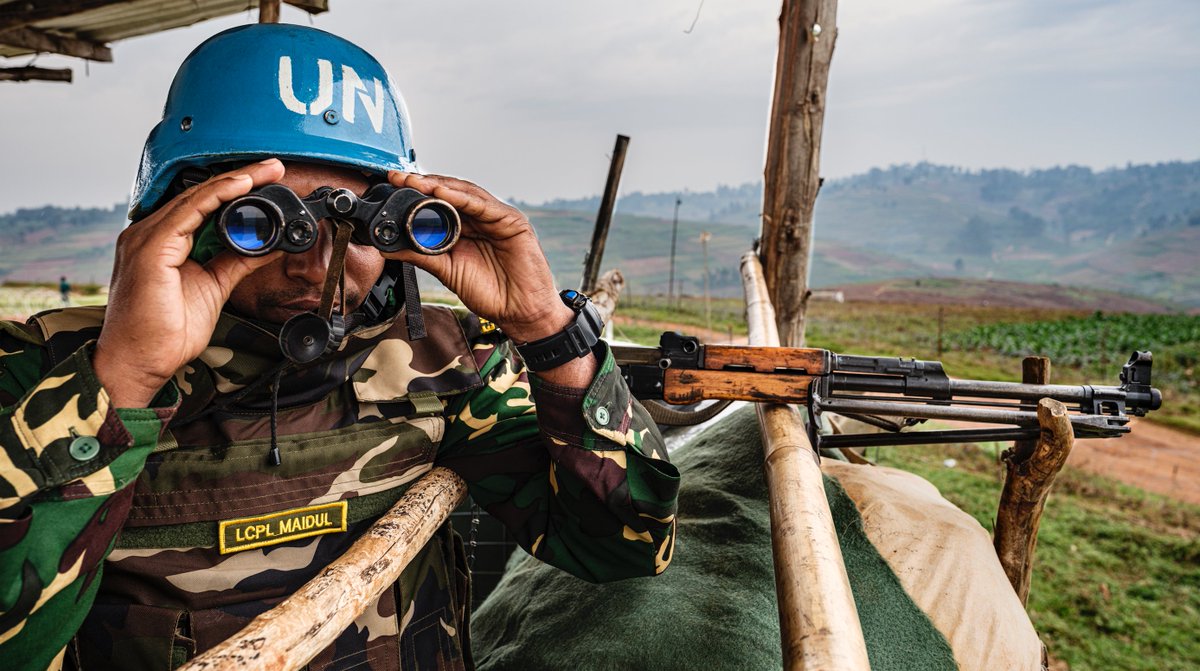Three years ago, gunmen came to five-year-old Rachel Ngabusi’s village
One of the men cut off her sister's arm. Another tried to cut Rachel’s face off with a machete
Somehow the little one survived. Her mother did not 🧵
telegraph.co.uk/global-health/…
One of the men cut off her sister's arm. Another tried to cut Rachel’s face off with a machete
Somehow the little one survived. Her mother did not 🧵
telegraph.co.uk/global-health/…
Rachel is a victim of a conflict that the world has learned to forget
Since 2017, frenzied armed gangs in the northeast of the Democratic Republic of Congo have forced almost half the population of a region the size of Ireland to flee their homes
Since 2017, frenzied armed gangs in the northeast of the Democratic Republic of Congo have forced almost half the population of a region the size of Ireland to flee their homes

The fighting has created one of the largest humanitarian crises on earth, with Ituri Province at the centre
Little aid reaches this corner of the DRC and the nation is now home to 5m refugees, second only to Syria
Little aid reaches this corner of the DRC and the nation is now home to 5m refugees, second only to Syria

Eastern Congo is the land of a hundred and one wars
Ituri’s two main ethnicities – the pastoralist Hema and the farming Lendu – have been played off against each other by outsiders trying to get their hands on the region’s rich resources for more than a century
Ituri’s two main ethnicities – the pastoralist Hema and the farming Lendu – have been played off against each other by outsiders trying to get their hands on the region’s rich resources for more than a century

First, Belgian colonialists entrenched the Hema at the top of the region’s hierarchy
After independence, the power-crazed President Mobutu Sese Seko allied himself to Hema elites to keep Ituri’s wealth flowing into his Swiss bank accounts
After independence, the power-crazed President Mobutu Sese Seko allied himself to Hema elites to keep Ituri’s wealth flowing into his Swiss bank accounts

Then during the so-called Great War of Africa in the 2000s, Ituri province became the battleground of a devastating proxy war between Uganda and Rwanda backing rival ethnic militias 

From 2007 the fighting lulled
But now about a dozen Lendu militias belonging to an umbrella-group called CODECO are raping and pillaging Hema communities on a massive scale for reasons that no one seems to quite understand
But now about a dozen Lendu militias belonging to an umbrella-group called CODECO are raping and pillaging Hema communities on a massive scale for reasons that no one seems to quite understand

Even by the standards of the continent’s most decrepit refugee camps, the humanitarian situation in Ituri is desperate
There are around 70 sites for displaced people, and a budget sufficient to cover only ten of them, said Dr Gabriel Mutangilwa, @UNICEF's health coordinator
There are around 70 sites for displaced people, and a budget sufficient to cover only ten of them, said Dr Gabriel Mutangilwa, @UNICEF's health coordinator

Those shortages are likely to get worse
Last month, a leaked document showed that the UK government, a giant of the humanitarian world, plans to cut 60% of its aid to Congo
Last month, a leaked document showed that the UK government, a giant of the humanitarian world, plans to cut 60% of its aid to Congo

Some 3m children have been displaced by violence across the country, according to @UNICEFAfrica
Unprotected in their camps, with little security or education, they are vulnerable to rape or exploitation
Unprotected in their camps, with little security or education, they are vulnerable to rape or exploitation

“You find lots of displaced children begging for money. They start taking drugs when they’re very young."
"These children don’t go to school, they benefit from nothing. When they grow up they could easily fall in with armed groups,” Dr Mutangilwa said
"These children don’t go to school, they benefit from nothing. When they grow up they could easily fall in with armed groups,” Dr Mutangilwa said

Experts say that the only thing that could halt Ituri’s cycle of violence would be deployment of a massive outside force
But it is unlikely that the Congolese state, a thousand miles away in Kinshasa, can muster the strength or the will needed to end the bloodshed
But it is unlikely that the Congolese state, a thousand miles away in Kinshasa, can muster the strength or the will needed to end the bloodshed

🔓This article is free to read 🔓
@_Will_Brown reports | Photography by @SimonTownsley
telegraph.co.uk/global-health/…
@_Will_Brown reports | Photography by @SimonTownsley
telegraph.co.uk/global-health/…
• • •
Missing some Tweet in this thread? You can try to
force a refresh














